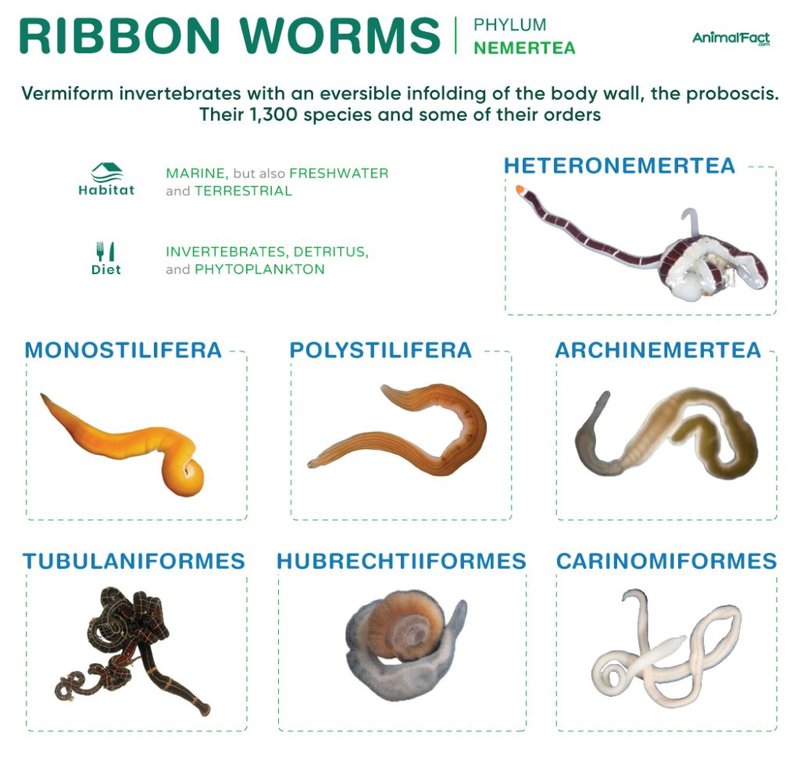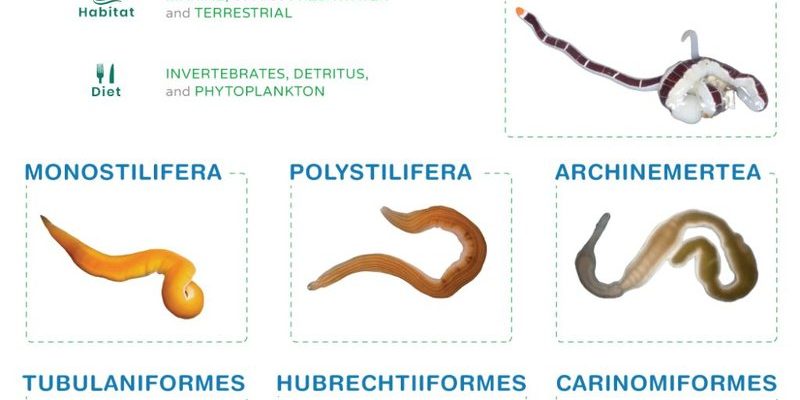
For a long time, scientists have been curious about how these creatures perceive their environment. While you and I might rely on our eyes to see the world, ribbon worms have developed some intriguing adaptations for sensing their surroundings. So, let’s unravel the mystery together and explore what’s going on in those slippery bodies!
What Are Ribbon Worms?
To kick things off, let’s clarify what ribbon worms actually are. These creatures belong to a group of animals called *Nemertea*. Ranging from just a few centimeters to several meters long, they can be found in many marine environments, clinging to rocks or swimming through the water. They have long, flat bodies that are often brightly colored, making them stand out in their underwater homes.
Ribbon worms are often mistaken for other creatures, like flatworms or even some species of naked sea slugs. They’re distinct, though, thanks to their unique body structure and feeding habits. Notably, ribbon worms have a proboscis—a long, tube-like structure they can shoot out to catch prey. This allows them to hunt small animals and even other worms, showing off their predatory skills.
What really sets ribbon worms apart is their body plan. They have a simple layout, but they make up for it with their adaptability. Instead of a complex nervous system like ours, these creatures employ a decentralized network of nerve cells that allows them to react quickly to their environment.
The Role of Sensory Organs in Animals
Now, let’s jump into the importance of sensory organs in the animal kingdom. Most animals, including us, depend on sensory organs to navigate their world. These organs help detect light, sound, and even chemical signals, which keep us safe and help us find food. Think of sensory organs as your body’s own alarm system; they alert you to changes around you.
For instance, humans have eyes for sight, ears for hearing, and skin to feel touch and temperature. But not every creature is built the same way. Some animals, like certain species of fish and amphibians, have extraordinary senses that enable them to thrive in their environments. The trick is that sensory organs come in many forms, and they don’t always look like our eyes or ears.
In the case of ribbon worms, the question is whether they possess more traditional sensory organs or rely on something different entirely. Here’s where it gets interesting!
Do Ribbon Worms Have Eyes?
So, do ribbon worms actually have eyes? The answer is a bit of a nuanced “no.” Ribbon worms don’t have eyes like we do, which means they can’t see in the conventional sense. However, they aren’t completely blind either. Many ribbon worm species possess light-sensitive cells or structures that can detect changes in light intensity.
These light-sensitive cells can be clustered in specific areas along their bodies. While not as advanced as human eyes, these cells help ribbon worms sense whether it’s bright or dark around them. This ability plays a crucial role in their survival, helping them avoid predators or find suitable habitats.
It’s fascinating to think about how ribbon worms have adapted to their environments without relying on traditional eyes. Instead, they’ve developed a different way to perceive their surroundings, showcasing the amazing diversity of life on our planet.
Sensory Organs in Ribbon Worms
While ribbon worms may not have eyes, they do possess other **sensory organs** that help them interact with their world. In fact, these organisms are equipped with various types of sensory structures that are quite effective for their survival. Let’s take a closer look at some of these features:
- Chemoreceptors: These specialized cells help ribbon worms detect chemicals in their environment. This sense of smell is crucial for locating food and potential mates.
- Mechanoreceptors: These sensors can respond to touch. When something brushes against their skin, ribbon worms can react quickly, which is key for evading predators.
- Photoreceptors: As mentioned earlier, these cells can sense light. They help ribbon worms detect changes in their environment without forming a full image like our eyes do.
Together, these sensory organs create a picture of the environment, allowing ribbon worms to navigate and thrive. Just because they don’t have eyes doesn’t mean they’re blind to the world around them!
How Do Ribbon Worms Use Their Senses?
Now that we’ve covered what sensory organs ribbon worms have, let’s explore how they actually use these senses in their daily lives.
Imagine you’re living in a bustling underwater city, where food is plentiful but predators are always lurking. Ribbon worms rely heavily on their sensory abilities to stay safe and find nourishment. For instance, when a ribbon worm senses changes in chemical signals, it can identify potential food sources nearby. This is similar to how a dog might sniff out a treat!
When it comes to protection, ribbon worms can detect vibrations and movements in the water. If something approaches too closely, they can quickly retract their proboscis or burrow into the sand to hide. Their ability to sense their surroundings keeps them from becoming someone else’s lunch!
Additionally, their photoreceptors help them track light and dark areas. This simple implication allows them to navigate the ocean floor while seeking out safe spaces for shelter and hunting grounds.
Comparing Ribbon Worms to Other Creatures
It might be helpful to compare ribbon worms to other creatures that also lack traditional eyes. For example, many types of mollusks, like certain slugs, don’t have eyes but can still sense light and movement in their environments.
Similarly, some fish can see clearly in dark waters using specialized adaptations, while others rely on heightened senses of smell or taste to locate food.
This diversity in sensory adaptations shows how evolution works in interesting ways. Each creature has evolved traits that help it survive in its specific environment. Ribbon worms, with their unique combination of sensory organs, offer a great example of how life finds a way to navigate challenges without following the same blueprint as others.
Why Understanding Ribbon Worms Matters
You might be wondering why all this information about ribbon worms’ sensory organs matters. Well, studying these creatures helps scientists understand the broader picture of evolution and marine ecology.
For starters, ribbons worms play an important role in their ecosystems. They help cycle nutrients through the ocean floor, and their presence can indicate the health of marine habitats. By understanding how they sense their environment, researchers can gain insights into how marine life adapts to changes in climate and human activity.
Additionally, ribbon worms can offer potential medical or technological insights. Studying their unique sensory adaptations may inspire new technologies or treatments. For example, researchers might look into how their ability to sense chemicals could lead to advancements in bioengineering or environmental monitoring.
Ultimately, the story of ribbon worms isn’t just about these fascinating creatures; it’s part of the larger narrative of life on Earth.
In conclusion, even without traditional eyes, ribbon worms have evolved remarkable sensory adaptations that allow them to thrive in their underwater world. From their chemoreceptors to photoreceptors, these unique creatures showcase the diversity of life and the myriad ways organisms sense their environments.
As we continue to explore the ocean’s depths, unraveling the mysteries of animals like ribbon worms gives us a greater appreciation for the wonders of nature. Who knew that something so slimy could be so fascinating?

